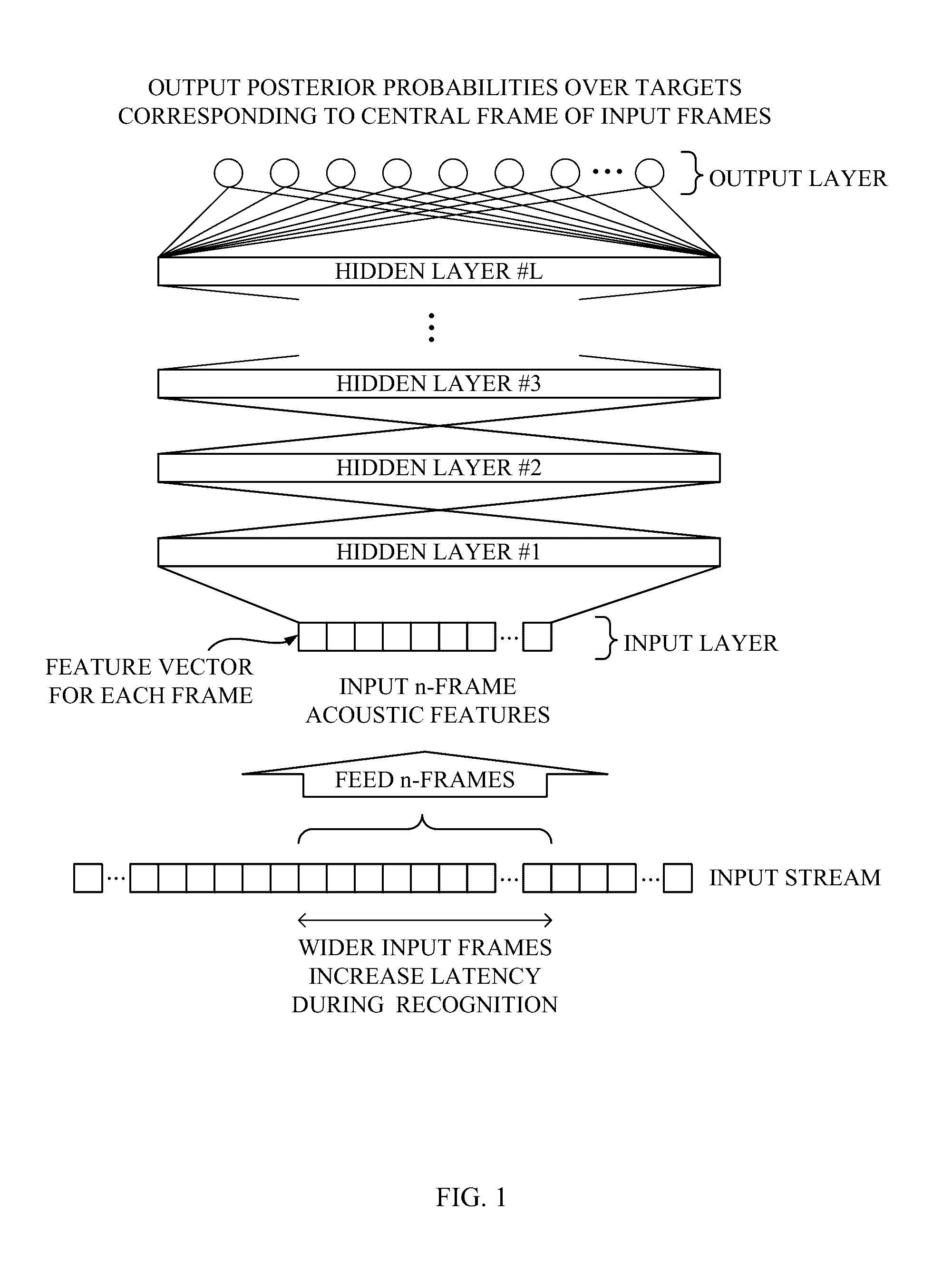Learning a model for recognition processing
a recognition model and learning technology, applied in the field of machine learning, can solve the problems of negatively affecting user experience, etc., and achieve the effect of improving recognition accuracy, increasing latency and computation cost, and not affecting the latency of the recognition process based on the recognition model of one embodimen
- Summary
- Abstract
- Description
- Claims
- Application Information
AI Technical Summary
Benefits of technology
Problems solved by technology
Method used
Image
Examples
first embodiment
[0049]FIG. 2 illustrates a block diagram of the speech recognition system according to a first embodiment of the present principles. As shown in FIG. 2, the speech recognition system 100 includes an acoustic feature extractor 102 that receives speech data and extracts acoustic features from the speech data; a speech recognition engine 104 that receives the extracted acoustic features and outputs a decoded result based on a speech recognition model 112; and a speech recognition model learning system 122 that constructs the speech recognition model 112 based on training data.
[0050]The acoustic feature extractor 102 receives the speech data digitalized by sampling analog audio input, that may be inputted from a microphone for instance, at a predetermined sampling frequency and a predetermined bit depth. The acoustic feature extractor 102 extracts the acoustic features from the received speech data by any known acoustic feature analysis and then outputs a sequence of the extracted acous...
second embodiment
[0087]Now referring to the series of FIGS. 6-8, a computer system and method for learning a recognition model according to a second embodiment of the present principles is described.
[0088]FIG. 6 illustrates a block diagram of the speech recognition system 200 according to the second embodiment of the present principles. As shown in FIG. 6, the speech recognition system 200 includes an acoustic feature extractor 202 that receives speech data and extracts acoustic features from the speech data; a bottleneck feature extractor 216 that receives the extracted acoustic features and outputs bottleneck features in place of or in addition to the standard acoustic features based on the speech recognition model 212; a speech recognition engine 204 that receives the extracted features including the acoustic features and / or the bottleneck features and outputs a decoded result based on the speech recognition model 212; and a speech recognition model learning system 222 that constructs the speech ...
third embodiment
[0101]Now referring to the series of FIGS. 9 and 10, a computer system and method for learning a recognition model according to third embodiment of the present principles is described. In the first and second embodiments, the recognition model is the speech recognition model. Therefore, original training data is the acoustic data, input segment is the n-frame acoustic features, extended segment is the n+m-frame acoustic features, and additional segment is the m-frame acoustic features preceding and / or succeeding the n-frame acoustic features. In contrast to the first and second embodiments, the recognition model of the third embodiment is an image recognition model. Thus, the original training data is image data.
[0102]FIG. 9 illustrates the block diagram of the image recognition system according to the third embodiment of the present principles. As shown in FIG. 9, the image recognition system 300 includes an image recognition engine 304 that receives the image data and outputs a de...
PUM
 Login to View More
Login to View More Abstract
Description
Claims
Application Information
 Login to View More
Login to View More - Generate Ideas
- Intellectual Property
- Life Sciences
- Materials
- Tech Scout
- Unparalleled Data Quality
- Higher Quality Content
- 60% Fewer Hallucinations
Browse by: Latest US Patents, China's latest patents, Technical Efficacy Thesaurus, Application Domain, Technology Topic, Popular Technical Reports.
© 2025 PatSnap. All rights reserved.Legal|Privacy policy|Modern Slavery Act Transparency Statement|Sitemap|About US| Contact US: help@patsnap.com



